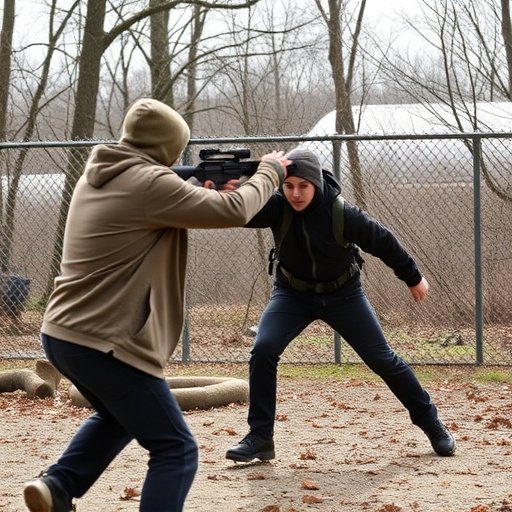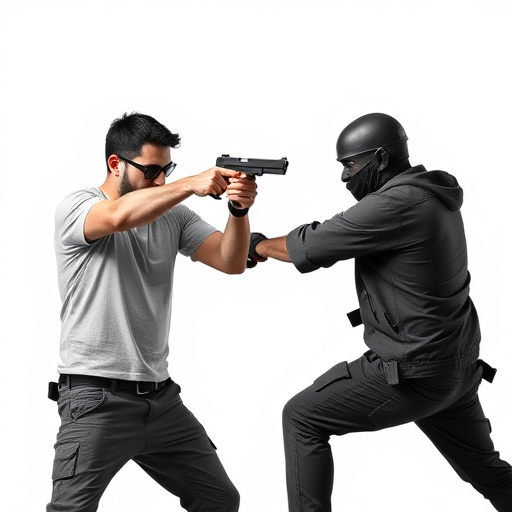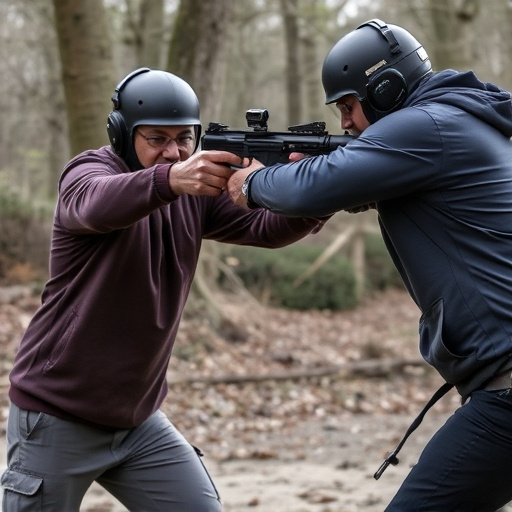The most concealable stun gun designs blend advanced power systems with discrete aesthetics. Balancing performance and secrecy, these devices utilize innovative materials and engineering to look like everyday items while packing a strong electric shock. Training and understanding local laws are crucial for safe deployment as these tools require responsible usage. Manufacturers focus on efficiency, accuracy, and adjustable power levels, ensuring users can defend themselves discreetly while adhering to legal boundaries.
In today’s world, understanding the capabilities and limitations of debilitating electrical charge weapons is paramount. This article delves into the intricacies of stun guns, exploring key aspects from concealment techniques for the most subtle and effective models to the latest technological advancements. We dissect power delivery systems, targeting considerations, safety training, legal frameworks, and evolving design trends, providing a comprehensive guide to navigating this complex landscape. Discover innovative solutions that balance effectiveness with discretion, highlighting the versatile role of stun guns in personal safety.
- Concealment Techniques for Stun Guns
- Power and Energy Delivery Systems
- Targeting and Effectiveness Factors
- Safety and User Training Considerations
- Legal Implications of Stun Gun Usage
- Evolving Technologies in Stun Gun Design
Concealment Techniques for Stun Guns

In the quest for effective self-defense, stun guns have emerged as a powerful tool, but their visibility can be a concern. One of the primary challenges with stun devices is balancing power and discretion. The most concealable stun gun design often incorporates slim profiles and ergonomic features to fit comfortably in hand or hide easily in pockets or purses. These gadgets are designed not to look like traditional weapons, utilizing smooth curves and compact dimensions.
Innovative materials and engineering play a significant role in achieving this level of concealment without compromising performance. Some models feature non-reflective finishes, subtle textures, or even built-in triggers that allow for easy hiding while still providing quick access during an emergency. The goal is to create a device that blends into everyday carry items, ensuring users can defend themselves discreetly and efficiently.
Power and Energy Delivery Systems

The heart of any electrical charge weapon lies in its power and energy delivery systems, which are designed to maximize the impact while minimizing detectability. In the case of stun guns, for instance, the most concealable designs often employ advanced circuitry and high-voltage technology. These compact devices pack a significant punch, delivering controlled electric shocks that temporarily incapacitate targets without causing permanent harm. The key to their effectiveness is the integration of efficient power sources, such as high-capacity batteries or innovative energy storage mechanisms, which ensure a steady and powerful current flow.
Moreover, modern delivery systems incorporate smart features like pulse generation and adjustable output levels. This not only enhances safety by minimizing collateral damage but also allows operators to adapt to various situations. The most advanced units can even detect body movement and adjust shock intensity accordingly, making them versatile tools for law enforcement, personal protection, and self-defense scenarios. These innovations in power and energy delivery systems have transformed stun guns into formidable, yet discreet, weapons capable of neutralizing threats effectively.
Targeting and Effectiveness Factors

The effectiveness of an electrical charge weapon, such as a stun gun, depends on several key factors. One of the primary considerations is targeting accuracy. The most concealable stun gun design often incorporates advanced targeting systems that allow for precise delivery of the electric shock, minimizing collateral damage and ensuring the safety of bystanders. These designs typically feature sophisticated sensors and algorithms that can detect and track a target’s movement, enabling operators to focus on the intended subject while avoiding others.
Additionally, the effectiveness is influenced by the power output and pulse duration. A stun gun with higher voltage and well-timed pulses can temporarily incapacitate a target without causing severe injuries. The optimal design strikes a balance between delivering a powerful enough shock to subdue an aggressor and being concealable enough to remain out of sight, making it a versatile tool for self-defense in various settings.
Safety and User Training Considerations

When it comes to addressing safety and user training considerations for a weapon like a stun gun, especially one designed to be the most concealable, understanding the device’s limitations is paramount. The most concealable stun gun design, while offering discreet protection, demands rigorous training to ensure safe and effective deployment. Users must grasp the instrument’s activation mechanisms, range, and the physical toll it can exact on both target and user—a factor often overlooked in the pursuit of stealth.
Comprehensive training should cover scenarios where the device is used for self-defense, emphasizing responsible usage, de-escalation techniques, and awareness of local laws regarding stun guns. Regular practice sessions are crucial to familiarize users with the stun gun’s response time and power output, ensuring they can accurately gauge and administer the shock required in high-stress situations without causing unintended harm or injury.
Legal Implications of Stun Gun Usage

The legal implications surrounding stun gun usage vary greatly depending on location, with some areas having more stringent regulations than others. In many countries and states, stun guns are considered less-lethal weapons, subject to specific laws that govern their possession, use, and sale. These regulations often include restrictions on who can legally own a stun gun, where they can be carried, and under what circumstances they may be employed. For instance, some regions mandate specific age requirements or mandate that users have a permit to carry a stun device, especially if it’s considered a weapon with high voltage or powerful features.
When it comes to the most concealable stun gun design, manufacturers often prioritize both effectiveness and discretion. Slim, compact models with adjustable stun levels and built-in safety features cater to users seeking non-lethal self-defense options that can be easily hidden. These devices are designed not only for their ability to incapacitate an assailant but also for their potential to minimize legal repercussions by allowing users to respond proportionately to threats, adhering to the principles of reasonable force and self-defense rights as governed by local laws.
Evolving Technologies in Stun Gun Design

The evolution of stun gun technology has led to some innovative designs, with a focus on balance between power and concealment. One notable trend is the development of the most concealable stun gun design, which prioritizes discretion without compromising effectiveness. These compact devices often take the form of everyday objects like flashlights or even fashion accessories, allowing users to carry them discreetly while providing a powerful shock when needed.
Engineers are continuously enhancing these weapons’ specifications, such as increasing voltage and pulse width for stronger jolts while maintaining low detection rates. Advanced materials and precision manufacturing techniques play a crucial role in achieving both high performance and minimal size, making these stun guns appealing to individuals seeking personal protection without drawing unwanted attention.
In light of the above discussions, it’s clear that while stun guns offer a layer of personal protection, their effectiveness and safe usage hinge on understanding their specific features, from power output and targeting to legal considerations. The most concealable stun gun design is not solely about aesthetics but also functionality—balancing power, size, and ease of deployment for optimal self-defense. As technology evolves, continued innovation in stun gun design will enhance safety and efficacy, underscoring the importance of staying informed on both emerging technologies and legal frameworks governing their use.
